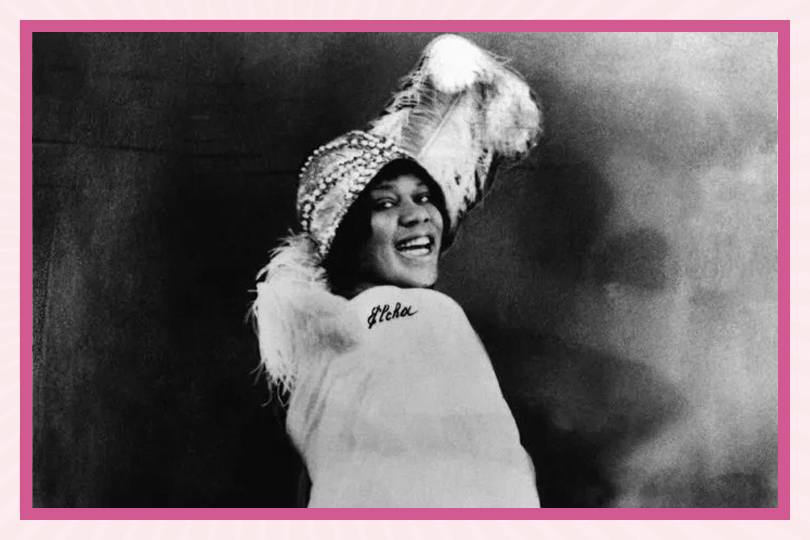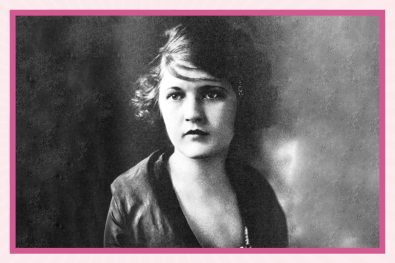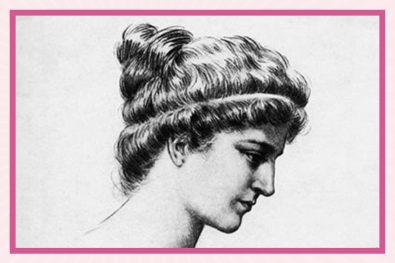By Sienna Vittoria Asselin
At the turn of the twentieth century, a young girl born into poverty and obscurity began to sing and dance for coins on the streets of Chattanooga, Tennessee. By the 1920s, she was the highest-paid Black performer of her time and definitively the reigning Empress of the Blues. Who was this fascinating woman, who soared to the top of the charts and became adored for her powerful voice, compelling lyrics, and charismatic performances? Read on for a look at the life and legacy of legendary blues musician Bessie Smith.
Early years
Elizabeth (Bessie) Smith was born in Chattanooga, Tennessee, on April 15, 1894. She was from a large, but poor family; she had six siblings and according to her biographer, Chris Albertson, “abject poverty hardly describes the economic status of the family into which Bessie was born.” She was also left as an orphan at a young age—her father, a Baptist minister, died soon after her birth, and in 1906, her mother and two of her brothers died. Bessie and her remaining siblings moved in with her aunt.
As a young girl, Bessie began performing on the streets for coins. One of her brothers accompanied her on the guitar. By 1912, she was also performing as a dancer. She joined a travelling minstrel show and over the next decade, she began to move around the vaudeville circuit. She performed in theatres and cabarets around the South, under the wing of her mentor, female blues vocalist Ma Rainey.
Marriage and music
In 1923, Bessie married a man named Jack Gee. That same year, she was signed by Columbia Records after a representative named Clarence Williams discovered her. Her powerful voice and performance charisma were infectious. She began recording her first tracks, including popular song “Down Hearted Blues,” which made her an instant celebrity. It sold approximately 800,000 copies and was incredibly popular.
She became an instant blues superstar and toured extensively. She even bought a custom-designed railroad car for her troupe to travel, sleep, and live in—which helped avoid restrictions she would have faced in accommodation due to racial discrimination and segregation policies of the time in the United States.
Her fame soared and she earned the title of Empress of the Blues. Bessie’s performances attracted such large and boisterous crowds that extra police details were needed to control the enthusiasm around her.
Over the course of her career, she made 160 recordings, including popular songs like “Tain’t Nobody’z Biz-ness If I Do,” “Empty Bed Blues,” and “Gimme a Pigfoot and a Bottle of Beer.” Her songs explored themes like poverty and oppression, stoic acceptance of defeat, and the trials of unrequited and betrayed love. Bessie collaborated with jazz performers like Sidney Bechet, Fletcher Henderson, James P. Johnson, and the legendary Louis Armstrong. By the end of the 1920s, Bessie was the highest-paid Black performer and a huge success.
Meanwhile, her marriage suffered repeated bouts of heated conflict, breakups, and infidelity by both parties. In fact, Bessie was known for her promiscuity and for her extramarital affairs with other women. Albertson writes that her bisexuality was so “against Jack Gee’s simple concept of life that it contributed to their marital problems.” Eventually, they separated and found different partners, but they technically stayed married until her death.
Later life and legacy
Unfortunately, her career took a hit in the 1930s, due to the combined effects of the financial troubles of the Great Depression, evolving cultural mores, and a shift in popular music taste. She stopped working with Columbia in 1931 and apparently also struggled with alcoholism.
After a brief comeback in the mid-1930s when she adapted to the early Swing Era, she was tragically killed in a car accident on her way to a show in Memphis.
There has been some debate amongst historians and biographers regarding the circumstances of her death. Some rumours suggest that she died from neglect because a white hospital refused to admit her after her accident. However, her biographer Albertson argues that this was not the case.
She died on December 26, 1937, at the age of 43, and was buried near Philadelphia. Her funeral was attended by some 7,000 mourners who came to pay their respects—the crowd was so large that the police had a hard time holding it back.
Bessie’s fame only increased after her early death, and she has been credited with influencing female artists like Aretha Franklin and Janis Joplin. Her life has been the subject of books, an HBO film starring Queen Latifa (watch the trailer here), and in 1989, she was inducted to the Rock & Roll Hall of Fame in 1989.
According to the Rock & Roll Hall of Fame’s website, the Empress of the Blues’ reign was “definitive, unprecedented and glorious.” They say that her unique claim to fame was partially due to the content of her music (often about liberated women), her style (plainspoken, and foreshadowing rap), and above all, her powerful voice.












